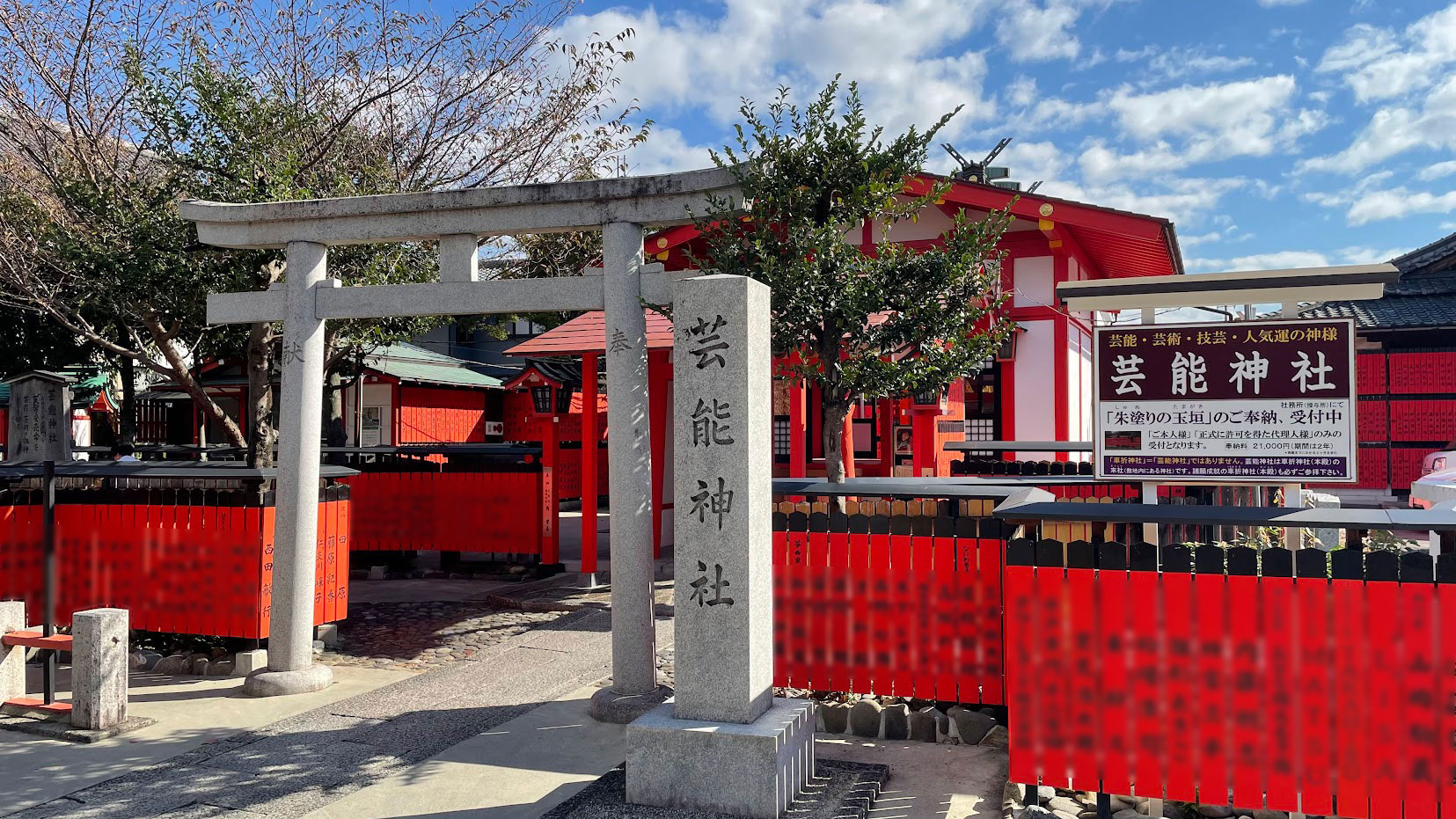Kyoto, Japan is home to numerous iconic shrines and temples each with its unique history and significance.
While many visitors flock to well-known sites like Fushimi Inari Taisha or Kinkaku-ji, there’s one lesser-known shrine that offers a peaceful and spiritual experience for travelers Kurumazaki Shrine.
Nestled in the western part of Kyoto Kurumazaki Shrine is a place where history art and spirituality converge.
Whether you’re an art enthusiast a history buff or simply someone looking for a tranquil escape from the crowds this shrine offers something special.
In this article we’ll explore the history spiritual significance and attractions of Kurumazaki Shrine as well as practical information for those planning a visit.

A Brief History of Kurumazaki Shrine
Kurumazaki Shrine has a rich history dating back over a thousand years to the Heian Period. The shrine was originally established to honor Kozu no Kami the deity of arts particularly music, literature and performing arts. This divine figure is believed to inspire creativity making the shrine a significant site for artists musicians actors and writers who come here seeking blessings for their careers and artistic endeavors.
Unlike more famous shrines which might have connections to the imperial family or Buddhism, Kurumazaki Shrine’s primary focus is on the creative spirit. The shrine has long been a place where artists come to offer prayers for success in their artistic pursuits. In fact, it is not uncommon to see offerings left by visitors small musical instruments handwritten notes and even paintings all left as a token of gratitude or a wish for future success.
The Spiritual Significance of Kurumazaki Shrine
One of the most fascinating aspects of Kurumazaki Shrine is its deep connection to the world of the arts.
Throughout history the shrine has been associated with various forms of creative expression including theater music and fine arts. This makes it a beloved place for those in artistic fields who believe that the shrine’s deity provides them with the spiritual guidance and inspiration needed to succeed.
Kurumazaki Shrine is particularly significant for performing arts in Japan especially traditional forms like Kabuki, Noh and Bunraku.
The shrine is often visited by actors and performers who offer prayers for a successful career or the smooth completion of a performance.
It’s not unusual to find small items such as musical notes miniature instruments and scripts placed near the shrine as offerings.
The spiritual energy of the shrine is palpable and many visitors whether artists or not leave with a sense of inspiration. Whether you’re seeking artistic inspiration or simply wish to enjoy the serenity of the place, Kurumazaki Shrine provides a peaceful space for reflection and spiritual renewal.
Exploring the Grounds What to See at Kurumazaki Shrine
Kurumazaki Shrine may not be as large as some of Kyoto’s more famous shrines but it has plenty to offer visitors who take the time to explore. Here are some of the highlights of the shrine grounds:
◎The Main Hall Honden
The main hall of Kurumazaki Shrine is an excellent example of traditional Japanese architecture. With its beautiful wooden structure and simple yet elegant design, it provides a tranquil space for worshippers. The hall is dedicated to Kozu no Kami and features a small altar where visitors can offer prayers and seek blessings.
◎Sacred Trees
The shrine is surrounded by several ancient trees which are considered sacred. These trees are believed to have spiritual power and visitors often take a moment to pause and feel their energy. Some people believe that these trees help to inspire creativity and encourage personal growth.
◎Artistic Offerings
As you explore the grounds, you’ll notice various artistic offerings left by visitors. These may include small musical instruments sketches and even written works. These offerings are made by those in the arts community who seek the deity’s blessings for their creative endeavors. For anyone interested in Japanese artistic culture, these offerings provide a unique insight into the deep connection between the shrine and the world of art.
◎The Torii Gate and Pathway
Like many Japanese shrines Kurumazaki Shrine has a beautiful torii gate at its entrance. Passing through the torii is considered a symbolic gesture of entering a sacred space. The path leading to the shrine is lined with lush greenery making it an ideal spot for quiet reflection and a peaceful walk.
◎The Gardens
The shrine is set in a beautiful natural environment with well-maintained gardens that provide a serene atmosphere. The peaceful setting offers visitors a chance to relax and enjoy the beauty of nature making it an ideal place for meditation or simply to take a break from the hustle and bustle of Kyoto.
How to Get to Kurumazaki Shrine
Kurumazaki Shrine is located in the Arashiyama area of Kyoto which is famous for its bamboo groves and scenic views.
For those taking the train the closest station is Arashiyama Station which is about a ten-minute walk from the shrine. The surrounding area is also home to many other popular attractions such as the Tenryu-ji Temple and the Bamboo Grove so it’s easy to make Kurumazaki Shrine part of a larger sightseeing tour of Arashiyama.
By visiting Kurumazaki Shrine you’ll not only have the chance to connect with the artistic spirit of Kyoto but you’ll also discover a peaceful side of the city that many tourists overlook. So if you find yourself in Kyoto don’t miss the opportunity to visit this special place and immerse yourself in the rich cultural history it represents.
Leave your luggage at BagDrop’s luggage storage service in Kyoto and enjoy a hands-free trip!
